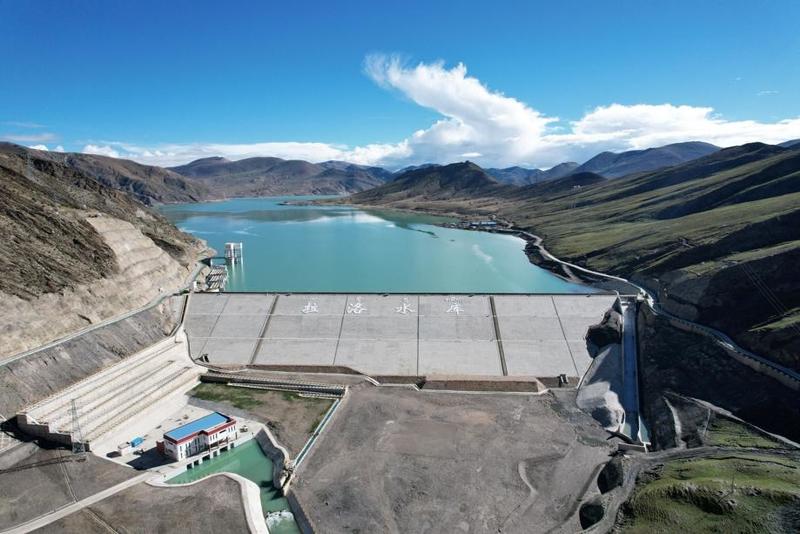 This undated photo shows a view of Laluo Reservoir in Shigatse, Tibet autonomous region. (PHOTO PROVIDED TO CHINA DAILY)
This undated photo shows a view of Laluo Reservoir in Shigatse, Tibet autonomous region. (PHOTO PROVIDED TO CHINA DAILY)
The fish ladder in the irrigation area of the Laluo water conservancy project in Shigatse, Tibet autonomous region, was listed recently in Guinness World Records as the world's highest-altitude fish ladder.
According to the region's department of water conservancy, the ladder, located on the shore of the project's dam — with a length of 2,194 meters at an altitude of 4,305.21 meters — has one fish inlet and six outlets.
By conducting experiments on fish swimming ability and doing ladder model testing, the goal was to minimize the impact of dam construction on fish as much as possible.
Guo Xiuyun, Engineer of the Laluo Water Conservancy Project and Irrigation Area Administration Bureau
The main structures of the ladder are inlets, ponds, resting pools and outlets. The main parts of the Laluo water conservancy and irrigation area projects were launched in May 2015. The fish ladder project kicked off in August 2016 and was completed in November 2019. It became operational in 2021.
READ MORE: Fishery thrives in landlocked Xinjiang
Guo Xiuyun, engineer of the Laluo Water Conservancy Project and Irrigation Area Administration Bureau, said that as one of the 172 major water-saving and supply projects of China, and it is also the water conservancy project in Tibet with the heaviest investment.
"The fish ladder is a passage for fish migration, which helps them pass through gates or dams by means of artificial water channels," said Guo. Careful investigations and surveys were conducted at the early engineering stage to learn the impact of dam construction on the migration and reproduction of fish in the watershed.
ALSO READ: China to expand its water transfer project
"By conducting experiments on fish swimming ability and doing ladder model testing, the goal was to minimize the impact of dam construction on fish as much as possible," Guo said.


